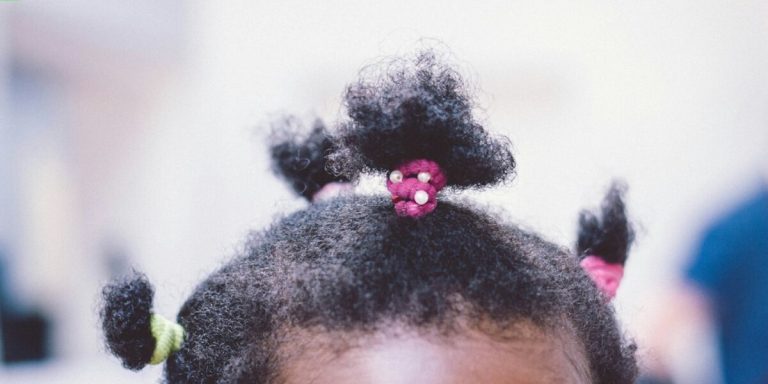How to Take Care of Synthetic Hair for Long-lasting Use
Mastering the art of how to take care of synthetic hair can breathe new life into your favourite wigs and extensions, extending their lifespan significantly. Synthetic hair requires special attention due to its unique nature as compared to human hair, but with a proper maintenance routine in place, it’s entirely possible for you to keep your faux locks looking fresh and fabulous.
In this blog post, we explore practical strategies that change the game when maintaining synthetic hair. We go beyond washing and brushing techniques to reveal subtle tricks you need to know. These tricks involve:
- Selecting products designed specifically for artificial strands
- Storing them correctly to prevent damage
By mastering these tactics, you can ensure your hairpieces last longer than anticipated. Let’s discover these secrets together and celebrate our cherished forms of self-expression.
Did you know?
Did you know that synthetic hair, unlike human hair, is made from fine plastic fibers which are manufactured to mimic real human hair? Therefore, it cannot withstand high temperatures as well as natural locks and requires special care to prevent damage.
Understanding Synthetic Hair: Composition and Daily Care
Synthetic hair has become a popular choice for many due to its affordability and ease of styling. Interestingly, it is made up of fine plastic fibers that are manufactured to mimic the look and feel of human hair. Advances in technology have allowed manufacturers in 2023 to fashion synthetic hairs that bear an uncanny resemblance to natural tresses.
Caring for synthetic hair requires some knowledge about its inherent properties as well as consistent maintenance habits. Unlike natural human hair which feeds on the oils produced by our scalp, synthetic versions do not have this self-nourishing capability making them prone to dryness over time.
The key factor in maintaining your faux locks revolves around reducing friction or any actions that can lead towards tangling and drying out these artificial strands prematurely. So whether you’re wearing wigs, extensions or braids made from synthetic fibers – remember: gentle handling coupled with proper cleansing routines will ensure their longevity without compromising style!
The Basics of Synthetic Fiber Structure
Synthetic hair, an innovation that has revolutionized the beauty industry, boasts impressive versatility and affordability. Primarily composed of fine plastic fibers manufactured to mimic human hair’s texture and appearance, synthetic hair is a popular choice among wig enthusiasts worldwide.
Comprehending synthetic fiber structure uncovers the secret behind its durability and resilience. These hairs are designed with polymers such as polyvinyl chloride (PVC) or acrylics which help them maintain their lustrous appeal over extended periods.
The advent in technology has enabled manufacturers to create varieties like Kanekalon or Toyokalon for better quality products resistant to heat styling tools’ damages. However, it’s essential not just knowing but also understanding how these advancements translate into your daily care routine.
To maintain synthetic hair’s longevity and stay on trend in 2023, you need to know how to take care of it. Here’s what you should do:
1. Wash With Care: Avoid using hot water on synthetic wigs; instead opt for lukewarm water mixed with mild shampoo.
2. No Human Hair Products: Your standard human-hair-care-products may harm this particular type of strands due corrosion caused by chemicals present in those items.
3.Transformations Require Caution: Remember that excessive heating tools could permanently deform your faux locks’ shape so use at low-heat temperature settings if necessary.
Routine Practices for Maintaining Synthetic Locks
Caring for synthetic hair involves a unique set of practices. Here’s what you should keep in mind.
First, consistency is key when it comes to maintenance. To ensure longevity and shine, approach your routine with diligence and regularity. This means brushing your synthetic locks daily with wide-tooth combs or brushes designed specifically to handle the structure of faux strands; this reduces tangling while maintaining the integrity of the hair fibers.
Next up: washing techniques. Contrary to popular belief, cleaning does not require harsh shampoos or heavy-duty conditioners that can cause damage over time—instead, opt for mild shampoo solutions followed by a quick rinse under cold water every 10-14 days depending on usage frequency.
A significant distinction between natural and artificial tresses lies in their response towards heat exposure: remember never to use high temperatures when styling! In fact, low-heat methods like using rollers overnight bring out exactly those perfect curls without compromising its texture or form!
While each strand may be resistant against dirt accumulation due to non-natural origins; nevertheless don’t skip giving proper love through hydration-based treatments once biweekly. Synthetic-specific sprays are available in market shelves which add vital moisture ensuring they stay soft & lush throughout all applications.
Styling Tools and Techniques for Synthetic Hair
Styling synthetic hair can be a bit tricky but with the right tools and techniques, it’s not an impossible task. There is often a misconception that you cannot use heat on synthetic hair; however, technology has advanced significantly in 2023 to produce ‘heat-friendly’ or ‘thermal resistant’ types of synthetic hairs. These are designed to withstand certain amounts of heat making them more manageable for styling.
It’s advisable though to always test out your heating tools on unnoticeable strands first before applying them all over your wig or extensions. Also important is ensuring that they’re set at low temperatures as high heats could potentially damage these fibres irreparably due its plastic composition.
One significant technique used for achieving beautiful curls without risking any harm from direct heat involves using curling rods after washing the hairpiece thoroughly. Sealing each wrapped rod with boiling water helps set defined waves safely onto your fake locks – an ideal method for those who prefer no-heat methods.
Brushes also work wonders when dealing with tangled synthetics – just ensure they have wide tooth bristles so as not stress out this sensitive material unnecessarily during detangling process. The goal isn’t about forcefully removing knots but rather gently coaxing tresses back into their former glory while minimizing fallout.
Safeguarding Strands During Heat Styling
When it comes to synthetic hair care, safeguarding your strands during heat styling is crucial. It’s not just about looking great; it’s also about keeping those faux locks in top-notch condition. Here are few strategies that can help you keep up with “how to take care of synthetic hair” effectively.
First and foremost, always remember to set your heating tools at the lowest possible temperature setting whilst styling. Synthetic fibers differ drastically from natural human hairs and tend to melt under excessive temperatures unlike our natural tresses which undergo less damage when exposed judiciously.
Next, utilize a thermal protection spray before applying any form of heat on your synthetic mane (yes! they’re for artificial hair types too). These sprays create a protective layer around each strand helping minimize potential impairment caused due to high temperatures by acting as an effective shield against the unwanted harmful effects.
You might want a quick fix at times but avoid leaving hot curlers or straighteners placed on one section for too long. Patience pays here ladies! Try moving them frequently while avoiding overheating any specific area thereby distributing its adverse impact equitably throughout instead of causing concentrated harm along particular sections only.
An old trick that still works wonders today comprises dampening your wig partially before starting off with the entire process altogether . This helps maintain moisture levels withinfibres providing them some resilience towards dryness induced wearing down – Sounds simple right? Yet widely ignored!
Creative No-Heat Styles for Damage Prevention
Opt for no-heat styles to prevent damage when taking care of synthetic hair. Use these creative methods:
1. Braiding: One of the most popular no-heat styling techniques, braids not only look stylish but also act as a protective style for your synthetic locks.
2. Twist Outs: These work best on curly or wavy synthetic hair types and offer a beautiful alternative to heat-styling methods.
3. Updos: From messy buns to elegant chignons, updos are versatile options ideal for any occasion, be it casual or formal.
4. Rod Sets: You’ll need flexible rods available at beauty stores, and the process includes wrapping sections around these rods followed by air drying until set in curls.
6.Scarf Styles : Silk scarves aren’t just fashionable accessories; they can play an integral part in creating head-turning hairstyles without causing harm due to heat tools.
7.Ponytails & Pigtails : Sometimes simplicity wins over all else – sleek ponytails and playful pigtails never go out of trend!
Washing and Conditioning Best Practices
Keeping your synthetic hair clean and well-conditioned is at the heart of ensuring its longevity. But remember, we handle our precious alternative locks a bit differently than natural ones. So when it comes to cleansing, there are some golden rules that you have to follow for optimum care and maintenance.
The first step in washing synthetic hair is choosing the right products tailored specifically for this type of hair. Using normal shampoos or conditioners intended for human locks might cause damage over time as these could be too harsh on their delicate structure. Aim for sulfate-free formulas with gentle ingredients; numerous brands offer suitable options now available everywhere in 2023 due to soaring demand.
Nurture each strand during conditioning because it’s crucial for maintaining the luster of artificial hair. Follow these steps:
- Use silicone-free conditioners to restore shine and prevent tangles.
- After conditioning, rinse thoroughly with cold water to seal in moisture, enhance vibrancy, reduce static electricity, and minimize frizz.
- Proper rinsing also extends the lifespan of your wig or extensions and keeps them looking perfect.
Failing to take these steps and strictly adhere to care best practices may render your efforts useless despite investing in quality wigs or extensions. It’s essential to maintain glamorous-looking wigs or extensions for a healthy full head of versatile hairstyles.
Proper Cleansing Methods to Extend Lifespan
Caring for synthetic hair involves delicate, consistent efforts. One of which is proper cleansing.
1. Never Use Hot Water: Start your cleaning process by avoiding hot water as it can damage artificial fiber and loosen curls or waves on wigs or extensions. Cold to lukewarm water is most suitable when figuring out how to take care of synthetic hair.
2. Choose the Right Shampoo: Specifically formulated shampoos for synthetic hair are a must-have in 2023’s market environment overflowing with options targeted towards natural hairs only.
3. Less Is More: Remember that when it comes to shampooing faux locks, moderation is essential because overdoing could strip off protective coatings on individual strands leading them vulnerable against breakage and losing their shine early on!
Choosing the Right Products for Your Faux Tresses
Caring for synthetic hair can be quite the challenge if you’re not using the right products. To keep your faux tresses looking sleek and feeling smooth, knowing how to take care of synthetic hair is essential. Here are some effective tips on choosing appropriate washing and conditioning items.
Firstly, avoid any product that contains alcohol or sulfates in its ingredient list as these substances may cause dryness or damage to your synthetic locks. Instead, opt for products specifically marked “safe for color-treated” or “sulfate-free”. These items possess milder formulas which render them perfect companions for keeping artificial strands healthy while maintaining their overall texture.
Secondly, consider selecting a shampoo having low pH value – one that lies between 5 & 6 – since it’s gentler on your artificial mane compared with high-pH variants. Such shampoos also help preserve both the shine plus softness of simulated follicles by effectively balancing their moisture levels.
Conditioner-wise, identifying suitable ones bearing crucial elements like keratin proteins alongside natural oils can benefit immensely when contemplating how to take care of synthetic hair in 2023. Keratin strengthens fake fibers whereas those natural oil ingredients work wonders replenishing necessary hydration thereby contributing to an ever-vibrant luster besides preventing tangling-related issues down-the-line.
Conclusion
In wrapping up, mastering how to take care of synthetic hair isn’t as untidy and complex a process as it’s often feared to be. With consistency, the right products, and practicalistic approach detailed in this comprehensive guide; your faux locks can maintain an exquisite glamor for quite some time!
Don’t let those bad-hair-days shroud you any longer! Our website brims with extensive guides on “Hair Care & Maintenance”. So why wait?
It’s time now to embark on that journey of radiance together. Craving more knowledge about hair upkeep or exploring other fabulous secrets regarding tresses? Dive into our sea of articles – Who knows what precious pearls await you!







